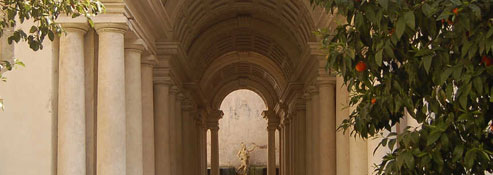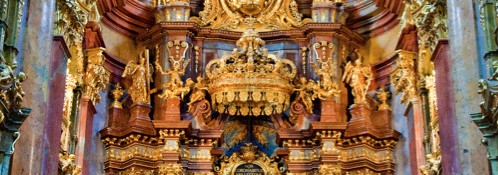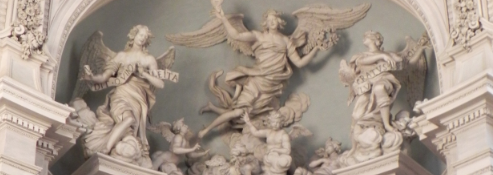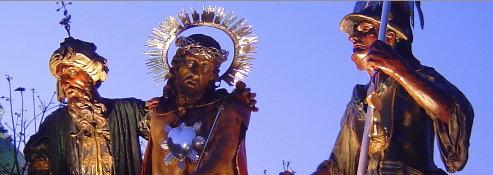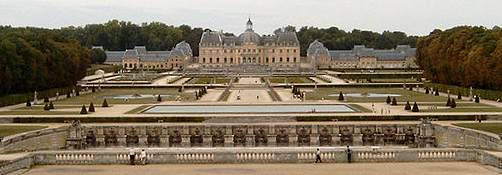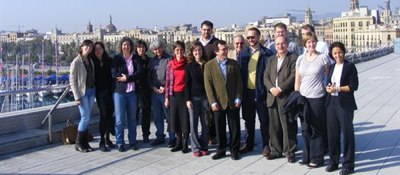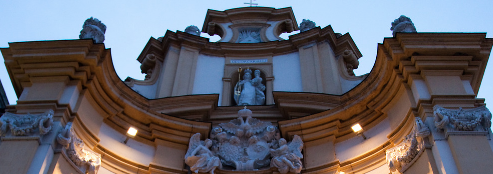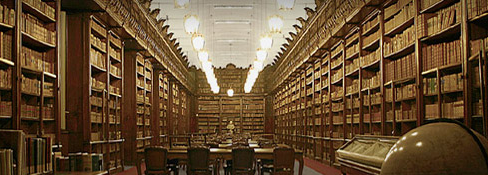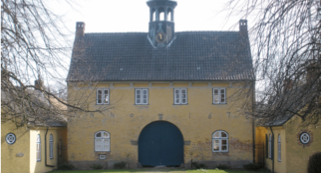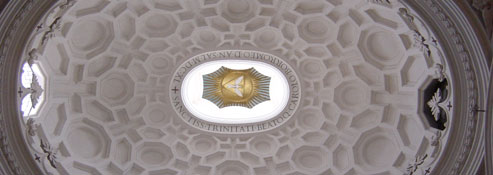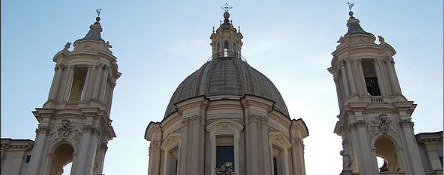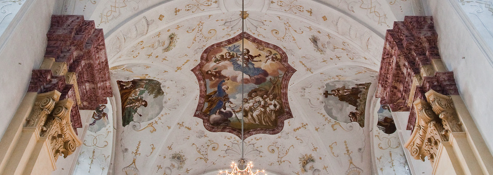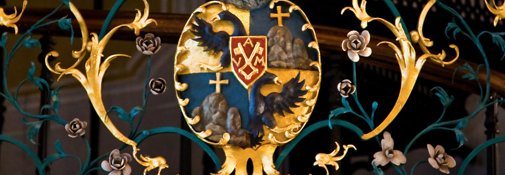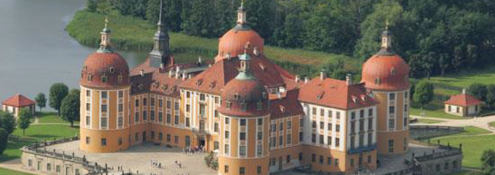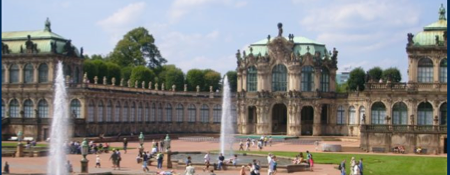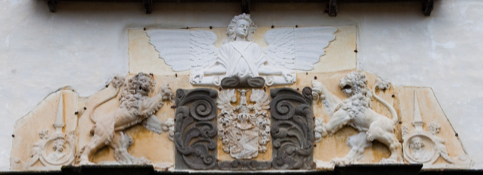As Maravall pointed out, the Baroque culture has to be understood as being deeply linked with the social context of the seventeenth century. [1] The same author insisted on the importance of taking into account all its peculiarities. [2] From this perspective, the European expansion during the sixteenth century and its consequences throughout the seventeenth century can be considered as remarkable aspects of this culture. [3] The European encounter with the Indies, both West and East, had a particularly interesting episode during the first half of the seventeenth century. [4] At the end of the sixteenth century Portugal and Spain became two of the most remarkable naval powers in the world. At the same moment, between 1580 and 1640, they were managed under the Iberian Union, monopolizing most of the European connections with the Indies. [5]
Although this unification did not deeply affect to the relationship between both territories, this paper tries to propose a preliminary identification of an common Iberian promotion of the Indies in the rest of European nobility. This campaign was achieved though books, pieces of art, medical remedies and even seeds that mainly were sold in Seville, with a decrease in the importance of Lisbon as the gate to Asia. On the one hand, this research is based on the archival works both in Spanish and in other European institutions which tries to identify the exchange webs in this moment in time. This has allowed us to analyze the role of the participants in these cultural circles, the importance of cities as a cultural nexus and the function of these exotica in their collections. Kunst- und Wunderkammern are not studied here as lists of goods of diverse quality as they has been traditionally achieved. [6] Nor has the relationship between the collectors and their pieces, as part of a process of improvement of their knowledge on Asia, as Rezeptionästhetik pointed out and Subrahmanyam has recently shown, been analyzed. Collections are considered here as an example of how foreign empires promote a concrete consumption fashion. Thus, to better understand the characteristics of this Iberian image of the Indies, the Asian goods introduced in the European market by the Dutch, or even by others such as the British will be used as comparators.
The European connections with Asia during the Baroque time
While the Baroque culture was incorporating the awareness of the otherness as part of a globalizing process, the ports with a direct connection with American and Asian cities remained few. The traditional gate for Asian goods to enter into Europe had been Venice, but at this time the Republic was being affected by a new phenomenon: The common piracy in the Mediterranean related to religious conflicts was being substituted by European offensives, leading the decline of Venice. [7] Something similar can be said about Istanbul and the Ottoman Empire, which were deeply affected after the Lepanto War (1571). [8] As result of the Portuguese and Spanish expansion, both Lisbon and Seville were considered as the main European gates to the New World. The Iberian Union would give them a common frame in terms of diplomatic gifts to Europe. These cities asides, the Dutch East India Company (VOC) was established in Amsterdam in 1602. Throughout the seventeenth and eighteenth century this firm eclipsed other European powers, but its ascent can be seen from the 1620s on, before it gained control of diverse Portuguese settlements in Asia. London was also a city where the headquarters of the firm later known as the East India Company were established. It was not until 1600 that the Queen created this new company mainly interested in India. In addition, some Asian items arrived in Europe thanks to relationships with Eastern courts, such as the Safavids, the Mughals or even a direct connection with the Chinese Empire. [9] Apart from these possibilities, the European cultural circles had the opportunity of getting Asian news and items through missionaries or private merchants of any nationality. However, this path could only be used for small shipments.
In conclusion, it can be seen that the acquisition of Indian goods was limited to a few ports in Europe, mainly Lisbon, Seville and Amsterdam. However, this selection can be even further reduced because Lisbon and Seville were part of the same reign during the Iberian Union. These ports represented the main connection with America, and the only Christian option. This said, Seville contained several obstacles. Firstly, it was closed to foreign merchants who would have had to have changed their names or found a local agent. Secondly, the Casa de la Contratación controlled the traffic of goods and persons. In contrast, the Dutch organization was more open to foreign participation. [10] Thus far, these cities have been understood as offering similar possibilities for the introduction of the Asian interests into Europe. In contrast to these profferings, this paper tries to highlight the particularities of Seville or Lisbon against Amsterdam, and the consequences.
The Catholic Gates to Asia: Lisbon and Seville
The European expansion in Asia from a Catholic perspective is closely linked with the life of Saint Francis Xavier, and especially with the Martyrs of Japan, both the Franciscans and the Jesuits. Apart from the Iberian "dispute" on the protection of Saint Francis Xavier during this time, the martyrdom shocked the Iberian society developing first celebrations, and later devotions. [11] This led to a general interest in Asia, and especially in Japanese namban art. Thanks to this, different boxes used as containers for relics are currently preserved in several convents and monasteries in the South of Spain. [12] This impact can be also found in the rest of the country in numers that cannot be found in the rest of Europe. [13] These pieces probably arrived before the Japanese policy of sakoku entered into force (1635), when no foreigner could enter the country, apart from the Dutch. [14] Apart from these boxes, other lacquered items arrived in Seville such as desks, shokendai (lectern), or crosses. This impact is difficult to follow in Portugal due to the current location of these pieces, which mainly form part of a private collection. [15] Out of Japanese or Iberian collections these kinds of works of art are rare, although singular examples can be found in Holland or Italy. It seems clear that the main interest in them was developed by the Iberian Union, from whose ports they would be sent to other European cities such as Florence, Rome or Amsterdam. [16]
Apart from namban pieces, the Iberian territory showed early on a deep interest in silver filigree, a research field that has been little clarified even today. [17] The Chinese and Indian techniques were far different from those traditionally used in Europe. In the same way, they were hardly imitable. Probably for this reason the commerce of these pieces in the intra-Asian circles was common, including for Portuguese, Spanish and even Dutch merchants and governors. The pieces were likely be done by Chinese artists, probably in Macao or Manila. [18] The Spanish control on silver circulation would have been useful for the control of these pieces, but none of the filigree works preserved has silver marks. Nonetheless, reliquaries, plates, boxes or chests of silver filigree are currently preserved in Spanish collections. [19] Something similar can be said for the Portuguese territory, where even today this kind of technique is considered as a traditional art, although it is clearly originally from the East. The techniques used impressed the European world who tried to copy them. According to sources, the first silversmiths in Europe attempting this were Italian and their models likely arrived from Iberian routes. [20]
In addition to namban art and filigree, ivory sculpture was also relevant in the Iberian shipments cargos. Although this artistic traffic, both between Manila and Seville or Goa and Lisbon, was kept alive during the eighteenth and nineteenth centuries, some stylistic features of this Baroque period have been pointed out. [21] Thanks to these, it is clear that the quantity of these pieces currently preserved in the Iberian Peninsula, and even in America, is much higher than in the rest of Europe, where they can be also found.
A particular contribution from the Portuguese world was the interest and diffusion of porcelain. It is known how the Portuguese diplomacy in Rome tried to introduce this as the best material for the Papal service. [22] In the mid-sixteenth century it was not a new material, but one which should have been known thanks to the Venetian trade. However, according to the sources it was not particularly common. Apart from these very early pieces, the Portuguese texts were the first to give notice about the fabrication of the porcelain. Probably for this reason, translations from Semedo or Duarte Barbosa were rapidly made into Italian. [23]
The particularities of this selection of Asian pieces can be explained from two different perspectives. On the one hand it may just be a matter of consumption rates. A recent study on the relationship between the East Indies and Seville seems to show a low impact on the city. [24] Unfortunately however, the point of view used did not consider the possible role of the Seville Humanists on the topic. [25] It is likely that future research projects on the subject can uncover more information on the Asian taste in the Seville of the time. For example, it might be expected that namban art, closely linked with the Catholic world, had more success in the Iberian Peninsula than in the Protestant territories, as heritage currently preserved shows. Something similar happens with silverworks. The Iberian presence in America offered the possibility of obtaining new materials in the cheapest way. It is known how the Mexican silver was sent to the Philippines and from there to China. It is possible that part of this silver returned to the metropolis as manufactured goods. When foreign merchants were sent to Lisbon or Seville to acquire Eastern pieces, the market provided the abovementioned variety. Thus, the European image, carried to Europe in form of pieces of art, would be this. In this same vein, the differences in consumption fashions between Dutch and Iberian world might be based on the routes taken. While the Portuguese and Dutch connection with Asia was direct, the Spanish were obliged to cross Mexico. Apart from the consequences for this territorial placement, the consumption patterns of cities such as Manila or Mexico should have had an influence on the pieces selected. For these reasons, other important Spanish ports of the route, such as Acapulco, Veracruz or La Habana were likely not so important, since they were just one stop in the whole process. A clear example of this influence can be found in a piece currently preserved in the Museo Pitti. It is a chalice made of pottery, clearly an original from Tonalá (Mexico), with Chinese silver filigree works. It is obvious that these solutions are clear examples of a globalized art that in addition had a global diffusion. Future research on this topic could attempt to address the relationship between the consumption of art in Manila and Mexico and its differences with the Manila Galleon. A better understanding of this would clarify the role of these cities in the development of this Chinese taste in Spain.
In addition, it should be studied whether the imperial powers could have decided to create a concrete self-awareness. In this sense, the Iberian Union would have tried to promote a "directed culture", in words of Maravall, in the specific field of the Asian taste. [26] This phenomenon can be analyzed from different perspectives. On the first hand, it is clear that in this moment the Iberian world produced many more publications on Asia than the Dutch. Apart from letters from missionaries and merchants, for most of the European cultural circles these texts were the only way of knowing more about these new territories. Throughout them, it is not uncommon to find descriptions of these pieces. For example, González de Mendoza explained the differences between porcelain and silver plates:
En medio de la mesa ponen la comida muy concertada, así de aves, y carnes diferentes, como de pescados regalados de los cuales hacen muchos potajes bien aderezados, y los sirven en platos muy curiosos de porcelana, o de plata (aunque de estos usan muy pocos si no son los virreyes). [27]
The inclusion of such references in such publications would promote the acquisition of these kinds of pieces. Texts asides, the imperial court could generate a cultural interest in the Indies thanks to a careful policy of diplomatic gifts. Although this phenomenon has been widely studied, it is not so common to find the connections between the fostered expectations by the abovementioned literature and this artistic exchange. Finally, a good place to compare the objectives in this matter of the Iberian monarchies is the institutional festivities and their symbolic discourses. In these cases, the main objective was to show a worldwide Empire under the same King. The particularities of every part of this Empire are not noteworthy and even the distinction between East and West Indies, which should have been clear in the sixteenth century at least in the Spanish sources, seems to be substituted by a more general perspective considering goods from either as goods from the Indies. The traditional division between Asian items, linked with the Portuguese world, and American items, superficially linked with Spain, was replaced by the image of a global monarchy. In conclusion, it can be said that it is likely that Philip II tried to promote a particular view from the Indies. This was based on their close ties with some of the most important courts in Europe, especially that of Rudolf II. Along the same lines, this was to promote the consumption of exotica, and with it commerce. Finally, this formed part of a European image of power with Philip II as a global Emperor.
Amsterdam: the Protestant counterpoint
In the first part of this paper the key role of Amsterdam and the VOC in the development of the Asian tastes in European circles was underlined. If a comparison were to be made between the Iberian and Dutch contexts the previous analysis would be more effective. A first aspect of this could be commerce in porcelain. [28] Spain appears not to have developed this commerce in such quantity. The main reason for this could be the long distance across which it would have to be transported. The pieces would have to have crossed the Pacific Ocean, and then Mexico, before crossing the Atlantic. This journey would be too dangerous for such a fragile material. In contrast, both the Portuguese and the Dutch had a direct connection, but their only possibility of acquiring porcelain was Macao. As recent studies have pointed out, "the marketing of Chinese porcelain on a multinational scale was realized a century after Da Gama by the English and Dutch". [29] The Dutch commitment to this business was remarkable, acquiring three million pieces of porcelain imported into Europe between 1604 and 1657. Although they had access to the Chinese production through their settlements in Formosa, they finally took advantage of their position in Japan. During this first half of the seventeenth century, these pieces of art entered the Baroque culture in Amsterdam and from here were introduced in other centers.
Apart from porcelain, the Dutch seem to have been strongly interested in nautilus shells, later mounted in chased silver gilt in Europe. Their origin was usually Indian and they were sent as natural products and not as works of craftsmanship. In any case, some examples of Chinese nautilus' can be found in Europe and more concretely in Florence. In contrast, these kinds of pieces are unusual in the Iberian collections. As has been proposed for the Iberian case, it can be considered a possibility that there was a particular Dutch image of Asia, which was conveniently spread in Europe. For this case the best example is painting. Alongside the still-life productions in Dutch painting it is easy to find both porcelain and nautilus. In contrast, there is no representation of namban art, Chinese filigree or ivory sculptures.
The reception of the Indies in the European courts
Once it is clear that the image of Asia given by Dutch and Iberian was not exactly the same, it is important to show its consequences in the European courts. Regards Asian taste, the most remarkable collection is to be found in the courts of Florence, Prague, London and, to a lesser extent, Paris. Other collectors such as the Gonzaga can be understood as part of this general context.
The Iberian taste and Asia in the Medici court
After the decline of the Venetian power and the increasing influence of the Medici diplomacy in Europe, the Grand Duchy of Florence carried out a remarkable expansion of Livorno as an international port. His objective was to connect it with the Indies, in cooperation with Portuguese, Dutch or Spanish fleets. The common project was based in a certain Florentine independence regarding commerce. Thus, for these decades the Medici archives offer a wide range of sources describing the East Indies and its possibilities, while during the same period the West Indies seems not to have been so attractive. [30] Florentine missionaries, whose journeys were paid in some cases by the Medici, replied with some superficial text. Apart from missionaries, various Florentine merchants carried out their works in Asia under Iberian rule, being considered as vassals of the Grand-Duchy. Based on a deeper interest in improving the Florentine presence in the Indies, they informed a wider perspective.
For these vassals, the main European ports for this commerce were Lisbon and Seville. The first example is the Florentine merchant Filippo Sasetti (1530-1588), who was living between these cities during 1578-1782. In this period, he was in contact with the Grand Duchy and was trying to trade in Indian products. After four years of training, he decided to continue with his work in the East Indies, keeping his contact with Florence. [31] A bit later, another Florentine traveler and merchant, Francesco Carletti, set out from Seville, in 1594. Apart from his travel book [32], several of his letters to the Medici family are preserved in Florence. Thanks to these letters, we can reconstruct part of the Florentine cultural circle regarding the Asian interest. In a letter written by Orazio Neretti in 1617 from Macao, he explained the shipment of a biombo to the Grand Duchy. [33] In this process only Italian merchants were used. The piece would leave Macao to Goa, where Fernando Cron would send it to Lisbon. There, Rafaello Fantoni and Giulio Nesi would send it to Florence, where Francesco Carletti would have the opportunity to explain to the Grand Duchy the characteristics of such a rare piece. Although Filippo Sasetti or Francesco Carletti can be considered as some of the most remarkable examples of Florentine merchants in Asia, other adventurers such as Giobatista Soddrini, Ludovico Arrivabene (1530-1594), Giovanni Botero (1544-1617) or Orazio Neretti should be taken into account. Thanks to these merchants, the project of a Florentine East India Company in cooperation with other European powers held many possibilities. These kinds of examples shows the capacity of the Florentine webs to acquire Asian goods, and even explain them. In spite of this, during the last decades of the sixteenth century the Florentine diplomacy tried to sign this cooperation with Portuguese or Dutch, without success.
First attempts with Dutch merchants can be linked the Medici interest in porcelain. [34] Recent studies have underlined the importance and constant renew of the Medici porcelain collection. According to sources, these pieces would have been used in the daily life in the court, and also as diplomatic gifts between Italian families. Although the Dutch relevance of global porcelain commerce is clear, the Iberian union also developed this kind of collection. These items asides, the rest of Asian goods acquired by the Medici, according to sources, did not have Dutch origins.
As has been shown by previous studies, after the Florentine attempts at trading with Asia in cooperation with Dutch and Portuguese, they tried the Spanish option. [35] The project was sent to the Spanish king, Philip II, thanks to the collaboration of Diego Brochero (†1625). [36] This influential member of the Spanish Consejo de Indias kept a good relationship with the Florentine world. Although he had no experience in the Indies, he gained a high reputation for maritime policies. He tried to help the Florentines to sign the agreement with the Spanish King, but the control from the Casa de la Contratación could not be discussed. Perhaps from this point, in the last decades of the sixteenth century, the Florentine interest on the city changed. Seville would not have been a well known city at that time, according to a description sent to Florence. [37] Until this moment the port was used by the Florentine merchants, but was not considered as one of the most important in Europe. [38] With this new perspective, the Grand Duchy tried to improve his knowledge of the city, regarding its history and society. Along the same lines, he achieved a direct control of its Bishop, thanks to his nephew Rodrigo de Castro (Valladolid, 1523-Seville, 1600) and his secretary, the Florentine Augusto Tizio. [39]
Their presence in Seville allowed the Medici have quick information on the goods from the Indies fleet. [40] From this data, the Florentines had the possibility of asking merchants of Seville to acquire these goods and send them to Florence. One such example has been identified in Giulio Brunacci, who linked Florence with Cadiz port at the time. Meanwhile, this knowledge promoted the exchange of gifts between the Sevillian cultural circles and Florence. This relation was extended to other similar personages such as the Bishop Melchior Peletta, who according to Tizio in 1584 was buying bezoars, silks and gold works all of them probably from Indies. In response to these shipments, the Florentines introduced different pieces of art into Seville, such as glassworks from Pisa or sculptures.
Nonetheless, the same relationship can be found between the Spanish king and the Grand Duke. [41] Apart from the artistic relationships previously studied, it has been clarified how Sebastián de Santoyo (+1588), personal secretary of Philipp II of Spain, was sent to Seville to control the shipment of a tree (a moglis) to Ferdinand I of Medici. [42] Apart from this concrete example, the exchange of this kind of goods would have been constant, according to Florentine collections. [43] For example, the existence of oriental pieces in the Medici armory is known. [44] In any case, these shipments can be understood as part of the traditional exchange of diplomatic gifts. [45] From this perspective, the present is part of the creation of the image of the Spanish monarchy. At the same time it shows the interest of the Medici in exotic goods. Both perspectives were developed thanks to the diffusion of Spanish texts on Asia in Italy.
The importance of the Iberian sources for knowledge about Asia at this time has been underlined. In the same veinm Florence published in 1588 the book of Giovanni Pietro Maffei Historiarum Indicarum Libri XVI in Latin. The book was written thanks to Jesuit sources, but its publication in Florence can be understood as part of the Medici interest on the topic. One year later, the text was translated by a Florentine into Tuscan and published in Venice. [46] Something similar happened with the publication of the Gonzalez de Mendoza. Considered as one of the most influential texts on China at the time, it was published in Spanish firstly in Rome (1585), then in Medina del Campo (1595) and later in Anvers (1596) and dedicated to Fernando de Vega y Fonseca, Bishop of Cordoba and President of the Council of the Indies (1529-1591). [47] The translations were published in a space of relatively few years, giving his perspective a Europe-wide impact. [48] Something similar can be said about the Discurso de la navegación of Bernardino de Escalante, published in Seville in 1577.
The Iberian influence on the Italian world and its relationship with Asia was carried out only from goods and books. The Japanese embassies, organized by the Spanish diplomacy, crossed Spain to arrive in Rome. As a diplomatic deference, the legacy did not cross the Mediterranean from a Mediterranean port directly to Rome. On the contrary, it spent several days in other cities such as Savona, Genoa or Florence. At this time, even the Italian courts, which were not too interested in Asia, were aware of the Iberian globalization. Future studies will help us to understand the impact of these embassies in the development of a Chinese taste in Italy and its sources. The present thinking is that it is likely that the basis was Iberian, since during these days the Spanish friars were the only ones having access to Japanese diplomats. As translators, they played the same role that the Iberian union was playing in the relationships between Asia and Europe.
As has been shown, the Medici family was interested in those Asian aspects underlined by the publications. The pieces of art, natural remedies or naturalia were consciously chosen by the Spanish world to be then spread out along Europe. A remarkable part of this heritage is still preserved in Florentine collection, such as the Museo Pitti or the outskirts villas. [49] [50] The Dutch world, well connected with the Medici family, did not seem to deeply affect this Eastern interest as much as the Spanish world did.
The Indian collection of the Emperor Rudolf II
Apart from Florence and Paris, DaCosta Kaufmann has pointed out the significance of the collection of the emperor Rudolf II (reigned 1576-1612) as representatio. [51] According to his opinion, works were organized throughout the Prague castle. From the "Spanish Room" the visitor could visit the "New Room" or the naturalia, which could constitute a distinct part of the collection. Most of the scholarly interest in this Kunstkammer has been related to sculptures and paintings, forgetting the remarkable Asian collection. As part of this, Rudolf II compiled not only the valued bezoars stones, but also a high number of caskets, boxes, rhinoceros horns, gold and silver filigree and even armour. On the contrary, porcelain is not so common in the collection. All items of porcelain were catalogued in 1619 and 1621 under the title "Indianische Sachen", where Lach found items from Asia, Africa and America. [52] Although it cannot be assured, it seems clear that the black lacquered boxes inlaid with mother-of-pearl have a Japanese origin. In the same way, the carved rhinoceros horns cup on gold filigree stands or the "nine painted works rolled together" can be considered as Chinese. [53]
Rudolf II, the nephew of Philip II of Spain, was sent to Aranjuez in 1563. The news of the discovery of the tornaviaje from the Philippines to America in 1565 would have arrived in the metropolis around 1566. Some years later, in 1570, a young Rudulf travelled with the King to Cordoba and Seville. Just one year later, the nineteen-year-old Rudolf departed for the Austrian Habsburg court. At this moment in time, the Iberian Union had not yet begun, and the relationships between young Rudulf II and Portuguese circles have not yet been uncovered. This would lead us to think that the "Indian" taste of the Habsburg Emperor is closely linked with that of his Spanish uncle. Although he should have exercised a deep influence on the Rudulf II, later sources show that some of the Asian items inventoried in Prague were Persian gifts, although the pieces were originally Japanese. [54] Fortunately some of these pieces have been preserved in the current Kunsthistorisches Museum of Wien, although a direct connection with the inventory is too strenuous a link to make. [55]
Conclusions
Throughout the first pages of this paper it was shown how Dutch and Iberian developed different patterns of consumption regarding East Asia. Without this perspective, later phenomenon such as the chinoisserie cannot be correctly analyzed. It is clear that the differences among the Dutch and Spanish are clearer than between Spanish and Portuguese before the Union. From 1580 it seems patent that the Spanish King tried to offer a common view of the Indies for the rest of European powers. Diplomatic gifts, Asian embassies or publications show the intentions of the King. Thanks to this approach, for the European powers the control of the world was Iberian. From this perspective, the traditional division between East and West Indies regarding Portuguese and Spanish expansion made no sense. The Iberian Union also tried to unify the vision of the Indies, underlining the control of the exotic goods market. In spite of this, the consumption patterns of the Iberian cities were not be affected by the Union. Lisbon and Seville, as well as Goa and Manila, continued with their own interests.
The Chinese taste that was spread by Iberian diplomacy was part of the European Baroque culture. It can be said that the acquisition of these pieces does not justify a deep interest on Asia in general. For example, the use of porcelain does not necessary explain the curiosity about China. In contrast, it has been pointed out how the European governors tried to find advisors who could explain the pieces to them. It is however true that even in these cases the information received could not have been particularly accurate. [56] These pieces of art, books and remedies were in fact the only way to improve their knowledge about Asia, a place of deep political interest at that moment in time.
Notes
1. J. A. Maravall, La Cultura del Barroco. Barcelona, 2012, (1st edition, 1975), p. 21.
2. Ibid., p. 24.
3. The importance of Asia in this process was initially studied in the volumes of D. F. Lach, Asia in the making of Europe. Chicago, 1965-.
4. S. Gruzinski, Las cuatro partes del mundo. Historia de una mundialización. Mexico, 2010.
5. The Portuguese importance on the diffusion of exotic goods along Europe during the Renaissance has been recently pointed out. This phenomenon can be followed in the next Baroque period. Exotica. Portugals Entdeckungen im Spiegel fürstlicher Kunst- und Wunderkammern der Renaissance. Wien, 2001.
6. J. v. Schlosser, Las cámaras artísticas y maravillosas del renacimiento tardío: una contribución a la historia del coleccionismo. Madrid, 1988.
7. A. Tenenti, Piracy and the Decline of Venice, 1580-1615. Berkeley and Los Angeles, 1967.
8. O. Yildirim, "The Battle of Lepanto and its impact on Ottoman History and Historiography", I R. Cancila (Ed.), Mediterraneo in Armi. Palermo, 2007, pp. 533-555.
9. S. Subrahmanyam, Courtly encounters: translating courtliness and violence in early modern Eurasia. Cambridge, 2012.
10. The list of voyagers who travelled to the East Indies in these moments includes people from diverse origin, against the common information given by the Spanish Catálogo de Pasajeros a Indias.
11. A. Caro, Relación, en que se da cuenta de las grandiosas fiestas, que en el Convento de Nuestro Padre San Francisco de la Ciudad de Sevilla se han hecho a los Santos Mártires del Japón. Sevilla, 1628. See also L. Méndez Rodríguez, "Festejos por la canonización de los mártires del Japón. Carmona, escena de los jesuitas". Laboratorio de Arte. N. 19, 2006, pp. 483-494.
12. Six are preserved in the Real Monasterio de Guadalupe. Five were studied by Y. Kawamura, "Laca japonesa urushi en la Capilla del Relicario del Monasterio de Guadalupe". Norba-Arte. Vol. XXVI (2006), pp. 79-87. A sixth is a little Sacrament box. Apart from this collection, one casket have been identified in the Monasterio de Santa María de Jesús in Seville. M. M. Fernández Martín, "Dos nuevas obras de arte namban en Sevilla". Laboratorio de Arte, 19, 2006, pp. 495-502. Another is preserved in the Monasterio de Santa Paula in Seville. A. J. Morales (coord.), Filipinas. Puerta de Oriente. De Legazpi a Malaspina. Madrid, 2003. One has been preserved in the Abadía del Sacromonte and another in the Cathedral both in Granada. See A. Ruiz Gutiérrez, El tráfico artistico entre España y Filipinas (1565-1815). Granada, Doctoral Thesis from the Universidad de Granada, 2003, pp. 323. Apart from them, other similar casket has been found in other religious collections such as those of Velez Málaga, Ayamonte, in the Convento of Corpus Christi in Murcia, or in the Toledo Cathedral.
13. Apart from the collection currently preserved in the Museo de Artes Decorativas, this kind of caskets and chest can be found in the Convento of San Juan de la Penitencia (Alcalá de Henares, Madrid), the Monasterio de la Encarnación (Madrid), two in the Cathedral Museum of Pamplona, in the Museum of Tudela, in the Parroquia de la Asunción (Miranda de Arga, Navarra), or in the Monasterio de las Descalzas Reales (Madrid), two in the Monasterio de Agustinas Recoletas (Pamplona), in the Fundación Museo de las Ferias (Medina del Campo, Valladolid), in the Parroquia del Salvador (Pedroso, La Rioja), in the Parroquia de Santa Eulalia (Segovia), in the Convento de la Purísima Concepción (Toro, Zamora), in the Parish Museum (Vilanova de Lurenzá, Lugo), in the Santuario de Fuencisla (Segovia), in the Diocesan Museum of Vitoria, and in the Museum of Navarra (Pamplona), between many others in private collection.
14. For the Spanish connection with Asia and the artistic consequences see M. P. Aguiló, "Via Orientalis 1500-1900. La repercusión del arte del Extremo Oriente en España en mobiliario y decoración" in M. Cabañas Bravo, El arte foráneo en España: presencia e influencia. Madrid, 2005, pp. 525-538. Other recent publications have underlined the importance of the Philippines in this global commerce. See A. J. Morales (coord.). Filipinas, Puerta de Oriente. De Legazpi a Malaspina. San Sebastián-Manila, 2003. C. Martínez Shaw and M. Alfonso Mola (coord.), El Galeón de Manila. Madrid, 2000.
15. Only the chest of the Museu Arte Sacra of Funchal can be linked with this institution. The rest are spread out along the country in diverse collections.
16. One of these boxes and chests is currently preserved in the Museo Pitti (Florence). Another is part of the Doria-Pamphilj Collection in Rome, and a last can be found in the Museo Stibbert (Florence). Finally the Rijksmuseum preserved one.
17. In the recent years many scholar have tried to clarify the development of Chinese filigree all over the world. A first proposal was done by M. Menshikova [et. al], Silver wonders from the East: filigree of the Tsars. Amsterdam (?), 2006. More recently Adrien von Ferscht has clarified the Chinese work of the nineteenth century.
18. Until now it is not known that the Chinese community in Batavia also worked with silver or gold.
19. A great number of silver pieces of this technique are awaiting a deep study. The only example that has been documented is the custody of Caicedo de Yuso (Álava). A. Ruiz Gutiérrez, "La ruta comercial del Galeón de Manila. El legado artístico de Francisco de Samaniego". Goya. Revista de Arte. Nº 318, 2007, pp. 159-167.
20. Domingo Fernández Navarrete described how "La filigrana, que en Manila labran los Chinos, la cual aprendieron de los Indios, ha pasmado a los Europeos. En Italia comienzan ya a remedarla algo": "The filigree, that in Manila is made by the Chinese, who learned from the Indian, has stunned the Westerners. In Italy, they have started to mimic it". See D. Fernández Navarrete, Tratados históricos, políticos, éticos, y religiosos de la monarquía de China… Madrid, 1676, p. 57.
21. The bibliography on the topic is numerous, being especially remarkable the works of M. Estella Marcos, La escultura barroca de marfil en España. Escuelas europeas y coloniales. Madrid, 1984. M. Estella Marcos, Marfiles de las provincias ultramarinas orientales de España y Portugal. Monterrey, 2010.
22. R. W. Lightbown, "Oriental Art and the Orient in Late Renaissance and Baroque Italy". Journal of the Warburg and Courtauld Institute, vol. 32, 1969, pp. 228-279.
23. A. Semedo, Relazione della Cina di Alvaro Semedo. Roma, 1543.
24. J. Gil. La India y el Lejano Oriente en la Sevilla del Siglo de Oro. Sevilla, 2011.
25. A. Urquízar Herrera, Coleccionismo y nobleza: signos de distinción social en la Andalucía del Renacimiento. Madrid, 2007.
26. J. A. Maravall, Op. Cit., p. 131-175.
27. J. González de Mendoza, Op. cit. p. 104.
28. A general approach to the artistic consequences of the Dutch connection with Asia can be found in K. Zanvliet (coord.), The Dutch encounter with Asia. 1600-1950. Amsterdam, 2002.
29. C. Le Corbeiller. China Trade Porcelain: Patterns of Exchange. New York, 1974, p. 2.
30. One of the oldest descriptions dedicated to the Grand Duchy was sent by the friar Giovan Battista in 1593 although he arrived in the Philippines from the Spanish route in 1578. Archivio di Stato di Firenze (ASF), Miscellanea Medicea (MM) 95/85. A bit latter another missionary, Jacinto do Mancio, informed from Goa about the European situation in the East Indies. ASF, Mediceo del Principato (MdP), 5080, f. 462.
31. P. Viani (ed.), Lettere di Filippo Sassetti sopra i suoi viaggi nelle Indie orientali dal 1578 al 1588. Reggio, 1844.
32. F. Carletti, Ragionamenti di Francesco Carletti Fiorentino sopra le cose da lui vedute ne´suoi viaggi si dell´Indie Occidentali, e Orientali, come d´altri paesi. Florence, 1701.
33. ASF, MdP 5080, ff 465-466 (old 399-400).
34. M. Spallanzani, "Medici Porcelain in the Collection of the Last Grand-Duke". The Burlington Magazine. Vol. 132, no. 1046, pp. 316-320.
35. C. Sodini, "Firenze-Goa via Livorno. Il Granducato e le Indie nei secoli XVI-XVII". Etruria Oggi. 1990, n. 24, pp. 58-63.
36. Florentine project asking the Spanish king to allow them carrying out commercial activities along the Indies, both West and East. Two vessels a year would connect Livorno and the rest of the Iberian ports along the world, without being part of the Flota de Indias, nor being controlled by the Casa de Contratación in Seville. ASF, MM 370/7, ff. 3r-5r.
37. Relatione dell' origine et essere della città di Siviglia/Relation about the origins and being of the city of Seville. ASF, MM, 95/61.
38. C. Varela Bueno, "Vida cotidiana de los florentinos en la Sevilla del Descubrimiento". Presencia italiana en Andalucía en los siglos XIV al XVI. Sevilla, 1989.
39. Augusto Tizio was part of the court of Cardinal Cardenal Giovanni di Cosimo I da Medici in 1560. ASF, MM, 616/19/315r. In 1578 was already in Madrid together with Pietro de Medici. ASF, MM, Vol. 1212, Insert, 2, f. 364. In 1580 entered the service of Cardinal of Toledo, Gaspar de Quiroga. ASG, MM, Vol. 254, f. 110. One year later was working for the recently elevated Cardinal of Seville, Rodrigo de Castro. AF, MM. Vol. 1212, Insert 5, f. 961. He should arrive in Seville before 1583, when he informed to Florence on American topics. ASF, MM, Vol. 1234a., Insert 5, s/f. From this very first moment, on behalf of Cardinal Castro, he started to send Indian goods such as seeds, birds, pigs, even a skull, all of them from the Indies.
40. The goods of the Indies Fleet from 1571 were listed in a letter preserved in Florence. ASF, MdP, 557.
41. E. Goldberg, "Artistic Relations between the Medici and the Spanish Courts, 1587-1621. Part I". The Burlington Magazine. Vol. 138. No. 115, 1996, pp. 105-114.
42. AGI, INDIFERENTE, 1956, L. 2, F. 16r-17r.
43. M. Scalini, "Oggetti rari e curiosi nelle collezioni Medicee: esotica e naturalia". Antichita viva, XXXV, nos. 2-3, pp. 59-62.
44. Although they can be related to the Japanese presence during the embassies, it is possible that they were part of a diplomatic gift. In this case, the similarities would be clear with the case of Rudolf II. M. Scalini, "L´armeria europea e orientale" in Magnificenza alla corte dei Medici. Arte a Firenze alle fine del Cinquecento. Milan, 1997, pp. 396-398.
45. M. P. Aguiló, "Lujo y religiosidad: el regalo diplomático en el siglo XVII" in M. Cabañas Bravo, A. López-Yarto Elizalde and W. Rincón García (coord.), Arte, Poder y Sociedad en la España de los siglos XV a XX. Madrid, 2008, pp. 49-62.
46. G. P. Maffei, Le Historie delle Indie Orientali, del R. P. Giovan Pietro Maffei della Compagnia di Giesù tratte di latino in lingua toscana, da M. Francesco Sedonati Fiorentino. Venezia, 1589.
47. G. Gonzalez di Mendozza [González de Mendoza, Juan]. Historia del Gran Regno della China di Giovanni Gonzalez di Mendozza, tradotta dallo Spagnuolo da Francesco Avanzi. Venezia, 1587.
48. Into Italian in Roma in 1586 and in Venetia in 1588; into German in Leipzig in 1597 and 1598; into English in London, 1588; into French in Paris, 1588 and 1589; into Latin in Frankfurt in 1591.
49. F. Morena, Dalle Indie orientali alla corte di Toscana: collezioni di arte cinese e giapponese al Palazzo Pitti. Florence, 2005.
50. F. Morena, "Bagatelle dell'Indie" e altre curiosità esotiche nel Museo dei Gonzaga" in VV. AA. Il Cammeo Gonzaga. Arti preziosi alla corte di Mantova. Milan, 2008, pp. 103-111.
51. T. DaCosta Kaufmann, "Remarks on the Collections of Rudolf II: The Kunstkammer as a Form of Representatio". Art Journal. Vol. 38, no. 1, 1978, pp. 22-28.
52. D. F. Lach, Asia in the Making of Europe. A Century of Wonder. Vol. II. Book 1. Chicago, 1970, pp. 46-54.
53. J. Chapman, The art of rhinoceros horn carving in China. Christie's Books, 1999, p. 234.
54. "In aim futteral ein schön cästl über und über mit perlnmutter eingelegt, welches der könig in Persia durch seinen oratorem kaiser Rudolfo präsentieren lassen, dabei ein verzeichnis zu befinden, was darinnen gewesen; es hat sich aber im aufmachen nur zwei kleine porczulanichen, ain gefarbter orientalischer dupasi, ain stuck wiss dupasi, ain schwarz halbrunde kugl von dupasi, ain stuck weisslich amathist, ain klaines fläschl von weissem stain wie ein schnecken und ein ledernes fläschl mit eim gulden mundstuck befunden". Lach, Donald. Op. cit. Vol. II, p. 50.
55. W. Born, "Some Eastern Objects from the Hapsburg Collections". The Burlington Magazine for Connoisseurs. Vol. 69, no. 405, 1936, pp. 269-277; and W. Born, "More Eastern Objects Formerly in the Hapsburg Collections". The Burlington Magazine. Vol. 75, no. 437, pp. 64-70.
56. A clear example of this is Francesco Carletti, who helped the Medici during the reception of these pieces. Living in Asia, Carletti sent a copy of a Chinese atlas. To improve the comprehension of the gifts he decided to make a resume and translate it, writing it at the end of the atlas. In fact, Carletti was not able to understand the text, and decided to give a general idea of the Chinese language, explaining how the numbers were written. It seems clear that Carletti was not able to read Chinese, although he was living in Asia for years. It is possible that he was helped by a translator who gave him only partial information.



